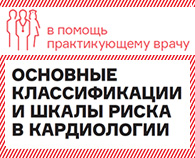Statin Use Associated With Musculoskeletal Adverse Events
Statin use is associated with an increased risk of musculoskeletal conditions, arthropathies, injuries and pain, according to a new retrospective analysis published June 3 in JAMA Internal Medicine.
The study retrospectively compared the likelihood of musculoskeletal conditions among 6,967 statin users and 6,967 propensity score-matched non-users enrolled in the San Antonio Military Area as Tricare Prime/Plus in the San Antonio Multi-Market Area. Musculoskeletal conditions were defined according to the International Classification of Diseases, Ninth Revision (ICD-9). Results showed statin users had a higher odds ratio (OR) for all musculoskeletal diseases (OR, 1.19; 95 percent CI, 1.08-1.30), as well as for injuries such as dislocation, sprain and strain, drug-associated musculoskeletal pain and arthropathies.
"To our knowledge, this is the first study, using propensity score matching, to show that statin use is associated with an increased likelihood of diagnoses of musculoskeletal conditions, arthropathies and injuries," wrote the investigators. "These findings are concerning because starting statin therapy at a young age for primary prevention of cardiovascular diseases has been widely advocated. Moreover, the numbers needed to be exposed for one additional person to be harmed were 37 to 58 individuals for various outcomes."
The investigators note that there are limitations to the ICD-9 codes used to define musculoskeletal conditions and that, although propensity score-matching eliminated differences in baseline characteristics between the two study cohorts, baseline confounders may have nevertheless persisted. The absence of a time-to-event analysis also may be a limitation. The investigators concluded, "Further investigations, including randomized clinical studies and larger scale prospective studies, particularly in physically active individuals, are necessary to obtain a more complete risk-benefit assessment for statin therapy."
“The concept is interesting,” said Alfred A. Bove, MD, PhD, MACC, past president of the ACC and professor emeritus of medicine at Temple University Hospital in Philadelphia, PA. “There are definitely some patients who note joint pain when on statins, that is separate from the muscle symptoms. The study suggests that the long term effects on the musculoskeletal system might be significant. Confounders however need to be considered. Are statin users more active making them prone to sprains, dislocations, etc.? Propensity matching might not account for all the physical activity of the two groups that were compared. As in many retrospective studies, the data are hypothesis generating, but the truth is best obtained from a prospective randomized trial, which in this case would be very difficult to perform. The benefit of statins on reduced cardiovascular events still offsets the negative effect on the musculoskeletal system,” he adds.
Source: www.cardiosource.org
Statins linked with risk of musculoskeletal injury
Dallas, TX - The use of statins appears to be associated with an increased risk of musculoskeletal injuries, including an increased risk of dislocations, strains, and sprains, according to a new analysis [1]. Researchers suggest the full range of musculoskeletal adverse events might not be fully known and that further studies are needed, especially in active individuals.
"These findings are concerning because starting statin therapy at a young age for primary prevention of cardiovascular diseases has been widely advocated," report Dr Ishak Mansi (VA North Texas Health Care System, Dallas) and colleagues in a paper published online June 3, 2013 in the Journal of the American Medical Association: Internal Medicine. "Moreover, the numbers needed to be exposed for one additional person to be harmed were 37 to 58 individuals for various outcomes."
The study included 6967 statin users propensity-matched with 6967 nonusers. Of the statin users, the majority was treated with simvastatin (73.5%) and approximately one-third had been prescribed maximum doses of the drugs, including simvastatin 80 mg, atorvastatin 80 mg, or rosuvastatin (Crestor, AstraZeneca) 40 mg. Simvastatin 80 mg is currently restricted on the US market because of concerns about muscle damage.
In the propensity-matched analysis, treatment with a statin was associated with a 19% increased risk of any type of musculoskeletal injury (p<0.001), a 13% increased risk of dislocations, strains, and sprains (p=0.001), and a 9% increased risk of musculoskeletal pain (p=0.02). There was a trend toward a 7% higher risk of osteoarthritis/arthropathies, but the association was not statistically significant in the propensity-matched analysis. There was an increased risk of osteoarthritis/arthropathies in two analyses that first adjusted for and then excluded patients with comorbidities at baseline.
In contrast, researchers observed no association between the number of years an individual took simvastatin and the risk of musculoskeletal injuries.
The group says that musculoskeletal adverse events with statins may represent a lesser known side effect of the drug class and should be studied further, especially in individuals who continue to be physically active. A better understanding of the full risks of statins will also "provide more complete data for cost/benefit and cost-effectiveness analyses of statin use," write Mansi et al.
Source: www.theheart.org






